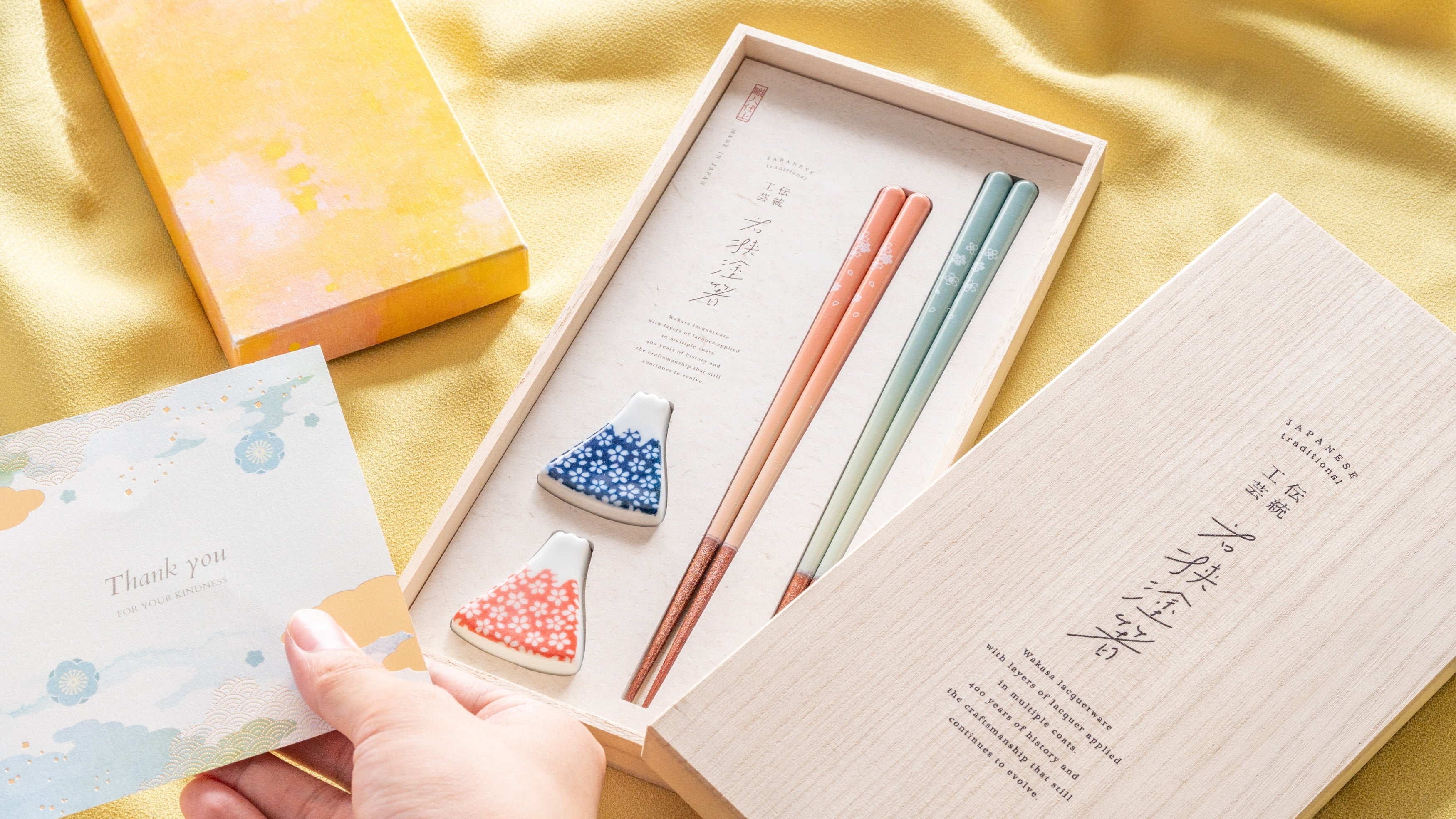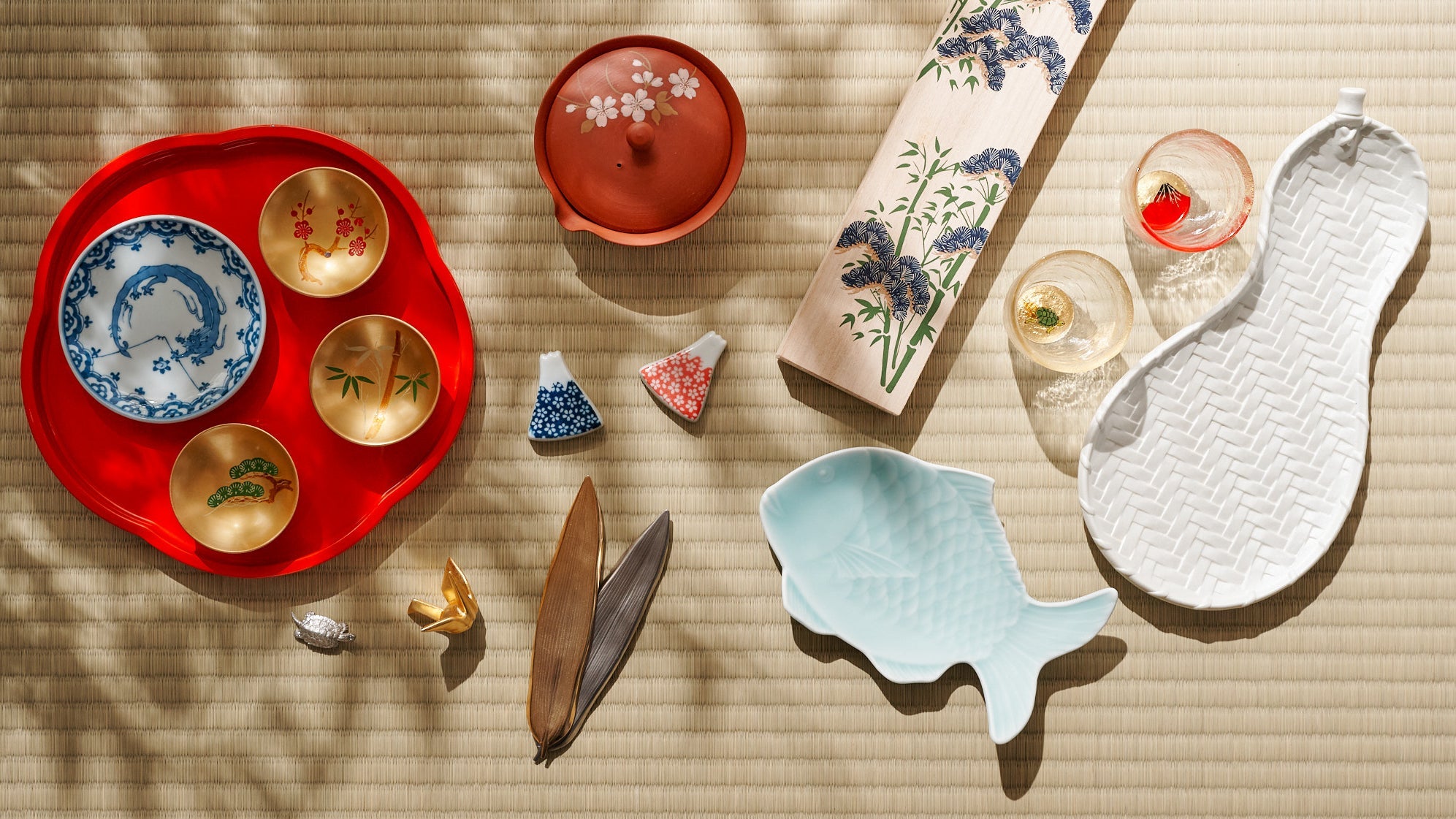
Guide to Japanese Fans
Written by Team MUSUBI
Welcome to the Guide to Japanese Fans. Discover how these elegant beauties blend centuries-old tradition with modern allure. From the graceful fan twirls of a painted uchiwa at summer festivals to the sturdy charm of the sensu in tea ceremonies, Japanese fans offer more than a breeze. Whether you’re a cultural connoisseur, a design devotee, or simply curious about one of Japan’s most iconic accessories, this guide will fan the flames of your inspiration—and leave you craving that next cool zephyr.

Table of contents
The Origins of Japanese Fans
In the tapestry of Japanese culture, two distinct types of fans emerged to meet both practical needs and artistic aspirations: the rigid uchiwa and the folding sensu. Although modern enthusiasts often encounter these fans as decorative souvenirs at summer festivals or as beautiful accessories in performances or tea ceremonies, each form boasts a long, vivid history that reflects shifting influences and local ingenuity.
The story of the uchiwa begins far before its popularization in Japan. Its earliest ancestor is the Chinese sashiba, a long-handled shield used during the Zhou dynasty (circa 3rd century BCE), which was used by high‐status individuals as a way to conceal their faces and uphold their dignity.
As this basic design traveled eastward during the Yayoi and Kofun periods (roughly 3rd BCE through 6th CE), it evolved into a smaller, hand-held tool called the utsuba, literally meaning to “beat away” insects or believed to dispel harmful spirits. Over time, the term morphed phonetically into uchiha and eventually became written as “団扇” (today’s uchiwa), a name that combines the characters for “round” (団) and “to fan” (扇), evoking its gently curved shape and cooling function.
Surprisingly, the delicate uchiwa also found its way onto the battlefield. From the late Muromachi period onward (late 15th century), a special form called the gunbai uchiwa was used by military commanders to direct their troops and issue orders during combat. Today, it still survives in Japanese tradition: sumo judges use the gunpai uchiwa to signal the beginning of a bout and to indicate the outcome of a match.

In contrast, the folding fan sensu is a uniquely Japanese invention. In the early Nara period (710–794 CE), a very different kind of fan took shape—one not meant for creating a breeze but for recording words. Known as the hiogi, these fans were crafted by layering slender wooden strips roughly 2–3 cm (0.8 in–1.2 in) wide, producing a rigid, paddle-like surface.
By the mid-Heian period (794–1185 CE), a new design emerged: the “bat wing fan” or kawahori ogi. Artisans took several slender bamboo ribs, bound them together with a pivot pin, and adhered fine paper across the frame. This lightweight fan—named for its resemblance to a bat’s outstretched wings—quickly found favor among aristocrats. In classic Heian narratives and paintings, one can glimpse noble figures gracefully holding kawahori ogi, using them not only to hint at concealed emotions but also as status markers in courtly life. Thus, what began as a wooden writing board evolved into an exquisite, paper-covered instrument that reflected the aesthetic refinement of its era.

Anatomy of a Fan
Japanese fans are celebrated for their graceful designs and ease of use, but few realize that the humble uchiwa and sensu are feats of engineering as much as artistry. Over centuries, these fans have evolved from simple cooling devices into sophisticated cultural icons, each with its own anatomy of parts, so intricate that every element contributes both form and function.
The uchiwa may look straightforward at first glance, but its structure is surprisingly complex. First, consider the handle: some artisans carve a hirae (flat handle) by splitting bamboo into strips roughly one-sixth to one-ninth of its original width and shaving it smooth, while others leave the bamboo’s natural marue (round handle) intact. A third option is the sashie (inserted handle), where the handle and fan body are crafted separately and joined later.

By contrast, the sensu boasts a different set of parts, each with its own name and purpose. The main surface, called the senmen, is where paper or fabric is stretched to create the workable area for generating a breeze. At the very top of the senmen lies the ten, while the bottom is called the chi; when the fan closes properly, the ten should form a perfectly flat line. The skeletal framework—senkotsu—is usually made of bamboo, though high-end fans may use fragrant woods like cypress or sandalwood, and casual versions sometimes employ plastic. Within the senkotsu, the two outermost, thicker slats are the oyabone (main bones), ensuring the fan clicks shut neatly. Finally, the characteristic yama (mountains) and tani (valleys) refer to the folds in the fan’s pleated surface: when open, the raised creases are yama, and the indented ones are tani.
In both uchiwa and sensu, this meticulous choreography of bamboo, paper, and thread is what transforms a simple object into a canvas for seasonal motifs, poetry, or branding. Next time you hold one aloft, take a moment to appreciate how each handle, rib, and fold has been crafted to create not only a cooling breeze but also a centuries-old symbol of Japanese ingenuity.

Ritual and Performance
By the Edo period (1603–1868 CE), the uchiwa had become a fixture of everyday life among commoners, evolving far beyond its earlier ceremonial and aristocratic roles. Thanks to advances in bamboo splitting and paper gluing techniques, these fans could produce a stronger, more consistent breeze—ideal for stoking cooking fires in open hearths or simply keeping cool during sweltering summer days.
At the same time, improved woodblock printing allowed artisans to mass‐produce uchiwa decorated with ukiyo-e scenes, seasonal poems, or floral motifs. Suddenly, a simple fan was not only a practical tool but also a portable piece of artwork to admire. Even as uchiwa continued to serve longstanding functions—such as warding off insects or signaling rank—they took on fresh significance when merchants and temples began printing advertisements directly onto the fan’s surface during the Meiji era (1868–1912 CE). In today’s Japan, the uchiwa remains a versatile medium: businesses distribute branded fans at festivals, pop idols hand them out as collectible souvenirs, and tourists delight in whimsically illustrated versions that serve as both keepsakes and functional fans.
The sensu has long been indispensable in Japan’s traditional performing arts. Noh and Kyogen actors, Kabuki performers, and dancers in classical court-style dances use the sensu as an extension of the body, a tool for conveying emotion and narrative nuance. A single flick can transform a fan into a teacup, a hat, or even a set of chopsticks, depending on the choreography or dramatic context.

Beyond the stage, sensu fall into several distinct categories: the natsu sensu (summer fan) is built for maximum airflow, with separate designs for men and women, often painted with seasonal blossoms or wildlife. The mai sensu (dance fan) features matching patterns on both sides, frequently embellished with gold or silver leaf for dramatic stage presence. The chaseki sensu (tea ceremony fan) is a petite model used as a respectful marker between guest and host or as a miniature tray for presenting tea lesson fees. Finally, the kazari sensu (decorative fan) is crafted specifically for display in tokonoma (alcoves) or entryways; its radiant gold and silver surfaces are designed to catch candlelight in traditional homes.

As we draw this exploration of Japanese fans to a close, it’s clear that the humble uchiwa and the graceful sensu are anything but simple. Each fan carries layers of history while embodying centuries of craftsmanship in every bamboo rib and delicate fold. Whether you find yourself captivated by the tactile pleasure of waving a summer uchiwa or mesmerized by the silent storytelling of a theater, these fans invite you to appreciate how art, utility, and ritual intertwine.











Leave a comment
This site is protected by hCaptcha and the hCaptcha Privacy Policy and Terms of Service apply.